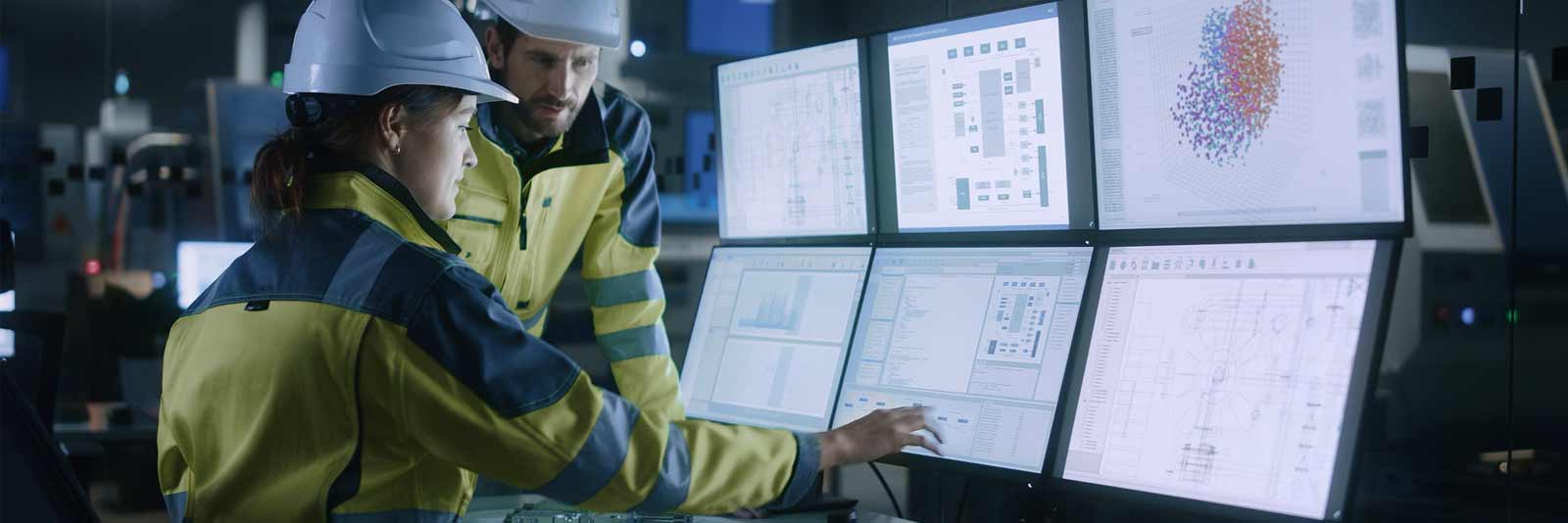Technical documentation in Industry 4.0
The requirements for technical documentation are becoming increasingly complex. Learn how modern software solutions help to meet them at the Menger Group.

Digitise and optimise with software

Digitising with softwareIn the course of the change towards Industry 4.0, not only are production processes, plants and products becoming more and more complex, but the demands on technical documentation are also increasing. The Menger Group presents trends and developments in this field and explains how modern software solutions help to optimise technical documentation.
Collecting and providing information
Technical documentation includes all documentation that accumulates during the entire life cycle of a technical product, from initial product designs to manufacturing documents and proof of quality assurance to manuals and operating instructions. The increasing complexity of both products and their manufacture means that technical documentation is also becoming more complex.
The reason for this is the so-called fourth industrial revolution: in Industry 4.0, man and machine are networked with each other. This holds enormous potential for productivity: machines can react autonomously to changing conditions and, for example, flexibly adapt a product to customer wishes without human employees first having to change settings manually. At the same time, however, this increases the demands on external technical documentation in particular, which provides information for users, maintenance personnel etc.
Challenges for technical documentation in Industry 4.0
The products manufactured in Industrie 4.0 are becoming increasingly individual. This increases the amount of information that potentially needs to be captured by technical documentation within a certain period of time. At the same time, suitable preparation of this information for the user is essential. The documentation must therefore be adapted accordingly to the respective user group:
- End customers and users need comprehensible information on the various functions and on the safe use of the product.
- Maintenance and service personnel require a large amount of detailed information, e.g. on the structure of the product, maintenance work and repairs.
- Machines need information with metadata that provides concrete instructions, e.g. on how to deal with malfunctions.
If your company is also active on the international market, all information is often needed in different languages. In summary, technical documentation in Industry 4.0 is facing the problem
- more information
- in more variants
- in a shorter time
have to process and provide. To meet these challenges, specialised software is increasingly being used in technical documentation. In the following, we would like to present some approaches to solutions, some of which are already being implemented today.
Fast adaptation to individualised products
The increasing digitalisation and automation of manufacturing processes makes it possible to adapt products more and more to the wishes of the respective customer. It is conceivable, for example, that a plant manufacturer not only offers its products in various standard variants, but also responds to special customer requests with customised products.
In this case, too, the appropriate documentation must always be supplied. While in the past this meant a lot of effort because a technical editor had to design a personalised manual each time, today numerous software tools facilitate the technical documentation in such cases. For example, instead of manually recording the characteristics of a product each time and creating the technical documentation anew, nowadays software is able to compile a text fully automatically from individual, pre-formulated building blocks. This makes the creation of manuals etc. much more efficient and time-saving.
The networking of machines in Industry 4.0 makes it possible for the information about which elements must be included in the manual to be sent directly from the machines in the production department to those in the technical editing department, in order to automate the compilation of technical documentation. Tasks such as translation and printing can also be optimised in this way. Your employees are thus relieved and can concentrate on their actual tasks, be it monitoring the machines or creating easily understandable texts for the manual, the operating instructions or similar.
From knowledge transfer to knowledge management
Different users and user groups place different demands on technical documentation – not only in terms of the content conveyed, but also with regard to the form of presentation. Technical documentation in Industrie 4.0 should therefore provide information in different ways, if possible, in order to meet the different information needs. For example, depending on the type of product, knowledge can be presented not only with a printed manual, but also in the form of videos, as vertical instructions or as content in searchable content delivery portals.
Indexing the respective content with metadata enables users to find exactly the information they need at that moment, for example, via a filter or search function. Traditional knowledge transfer is thus replaced by knowledge management, in which information is retrieved by the respective user individually and according to his or her needs.
Providing information for machines
Increasingly, machines are not only the objects of technical documentation, but are also becoming its users. Networked machines can independently search for information in databases and follow instructions for action. For example, it is already possible today to control the function of machines and systems with the help of sensors. To monitor these sensors, programmes are used that automatically search a database for the appropriate reaction in the event of conspicuous values.
The prerequisite for this is that all information is available in a form that can be used by machines. This means, among other things, that they must be provided with metadata that allow the software to search specifically for certain information. For example, if too high a temperature on a machine triggers the error code “A1”, then software can search for this error code in the associated database and find the reaction “Initiate maintenance order A1-X!” there. Other reactions can also be assigned to this, e.g. “Book an independent maintenance technician” and “Order the following spare parts: …!”, so that a meaningful reaction takes place without the intervention of an employee.
Technical documentation that can be read by programmes in this way can make other work processes, such as production, more efficient in addition to monitoring and maintenance. For example, machines can react automatically to changing requirements and switch between different settings without the need for manual intervention by an employee.
Customised software solutions optimise technical documentation
In these and other approaches, specialised software is an important helper in optimising technical documentation. It makes it possible for large volumes of data, such as those generated on the one hand by the increasingly complex plants and machines themselves and on the other hand by the increasing individualisation of products, to be recorded and processed in a short time in order to create the required documents. In addition, such software can check the contents as well as the meta-information of the technical documentation for missing or incorrect entries and thus improve quality assurance.